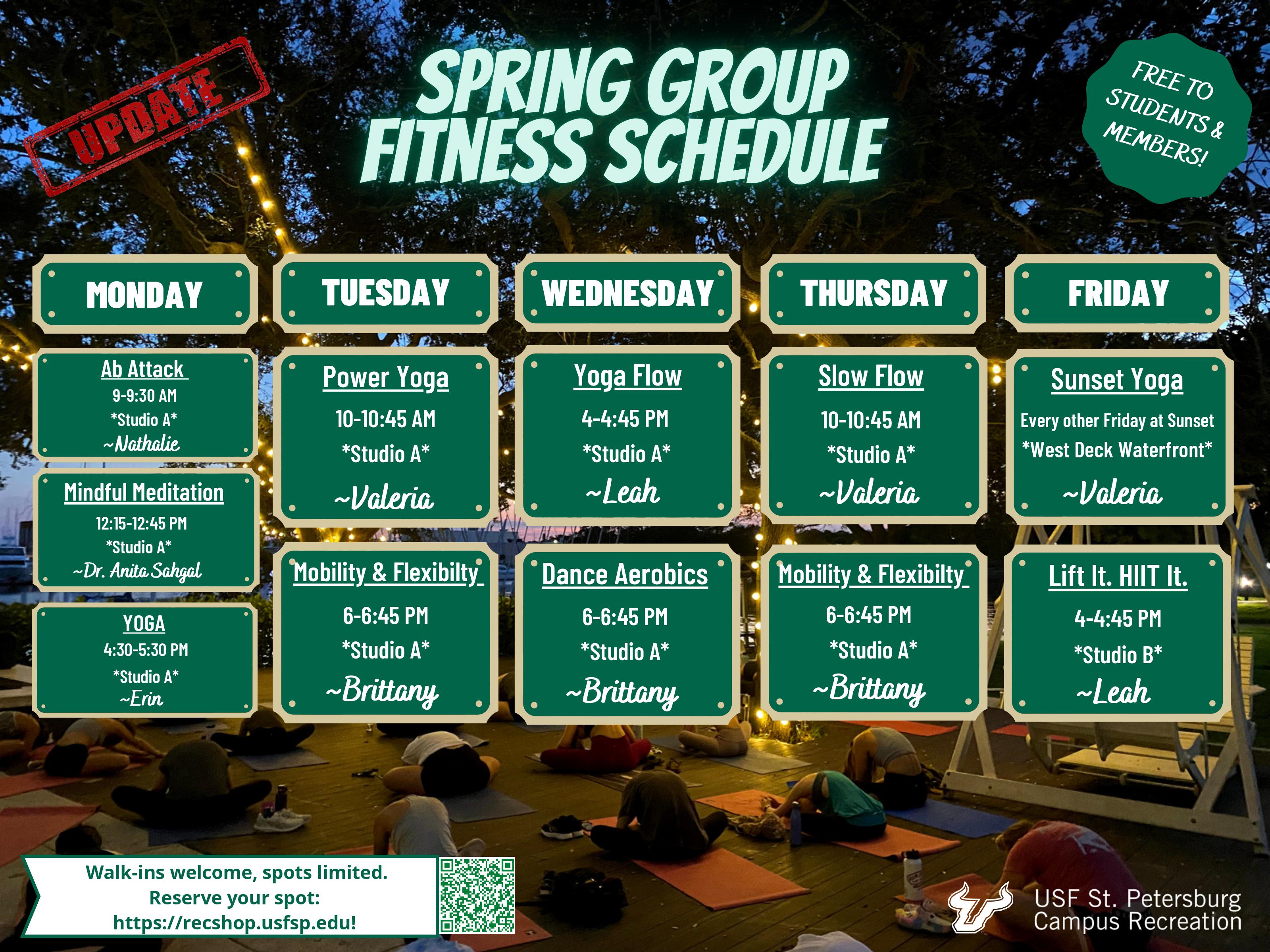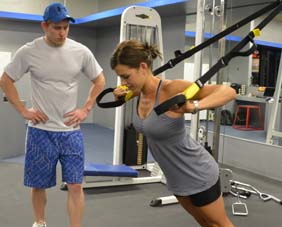
We are the best place to find a personal trainer in Cleveland. Let's take a look at how each personal trainer in Cleveland charges for their services. This article will help decide the best type of personal trainer for you. We'll be covering the most important questions before you make a decision.
Cost
Personal training costs in Cleveland are largely determined by the trainer's level of experience and the quality or the location where the trainer works. Cleveland is home of many well-respected fitness instructors. They charge per hour. Alluvit is a great resource for finding personal trainers around Cleveland, Ohio. They have certified trainers and will be able to provide you with the necessary guidance.
Results Personal Training in Cleveland's eastern suburbs does not have to charge any initiation fees nor monthly EFT credit cards charges. Clients can choose to pay per session, or to buy multiple sessions. Then they will pay as needed. Certified Personal trainers are available at the gym, so clients can choose which one suits their needs best. For a one-time session, costs are usually around $120. You may be charged a slightly higher fee if you have to book multiple sessions.
Locations
There are many choices for personal training in Cleveland. It can be difficult to find the right one. To help you find the best gym in Cleveland, Hoodline has crunched the numbers, using Yelp and other data sources. It gives a data-driven analysis and links to affiliate firms that earn money by clicking. Crossfit Sixth City and Cleveland Strength and Conditioning are two of the most popular places to get personal training in Cleveland. These gyms are both located in Goodrich Kirkland Park, and have received five-star Yelp reviews.

Initial consultation
The initial consultation for personal trainers in Cleveland involves a thorough fitness evaluation and a detailed discussion about your goals. Additionally, a 30-minute personal workout will be provided. Your fitness goals and current fitness level will be taken into consideration as your trainer creates a program specifically tailored to meet your needs. To make sure that clients are up to date, the trainer will keep a file. Your information during the consultation will be used as the basis for your workout plan.
For a personal trainer to design a winning program, they will need to have an understanding of the basics in the fitness industry. This requires critical thinking, competence, and time. The initial consultation will give you all the information you need to create a program that works for you. The consultation will also provide you with motivation and encouragement during the entire process. Personal trainers must be able motivate clients to achieve their goals through training.
Cost per session
What does personal trainers in Cleveland charge? It depends on many factors such as the trainer's certification and whether insurance is available. Personal trainers typically offer 30- to 90-minute sessions. Sessions can be booked daily, once a week or several times per week depending on the client’s schedule and needs. Longer and more frequent sessions may be better for some clients, while those who have trouble sticking to a strict training schedule will likely benefit from shorter sessions.
Personal training in Cleveland may cost between $29 and $166, depending on which trainer you choose and where you live. These trainers will travel to your home, building gym, or local park, depending on your preference. While personal training may have higher prices than other cities, they are still much more affordable than expensive sessions in gyms. Most gyms don’t list prices on their websites and rarely offer refunds if the trainer doesn’t work out.

FAQ
How Metabolic health is key to aging well
People live longer lives than ever before. But as they do, they're also getting sicker. Despite making great progress in medical science, it is becoming more apparent that our current approach to medicine is not working.
We must change the way that we look at health and aging. Healthy aging is possible only if we look at our metabolic health, not just weight loss, but also overall well-being.
Your metabolism must be strong and healthy to ensure you live an active lifestyle for many years to come.
There are many ways you can improve your metabolic health. One way is to include these 7 foods in your diet.
-
Resveratrol has been found to be a key ingredient in blueberries, and it has been shown that it can help increase cell longevity. They also contain antioxidants and vitamins C & E.
-
Pinto beans and lentils make excellent sources of fiber as well as plant-based protein. These nutrients help to keep blood sugar levels constant so they don't spike and crash.
-
Broccoli's sulforaphane has been shown to protect DNA from damage in research. It may even slow down the progress of cancer.
-
Chia seeds are rich in fiber and omega-3 fatty acid. They are high in protein and antioxidants. All of these nutrients help promote heart health, brain function, and gut health.
-
Green Tea has polyphenols called catechins. Studies show that catechins in green Tea can reduce the risk of developing diabetes, stroke, cognitive decline, and bone fractures.
-
Salmonis rich in vitamin D and low in saturatedfat, salmon is one of the best sources for lean protein.
-
Walnuts are rich in omega-3s as well as antioxidants such alpha lipoic acids (ALA). ALA boosts energy production and reduces inflammation.
What does butter have to do with men?
Butter is one of many good sources of saturated fats. This type of fat contributes to healthy skin, hair, and stronger bones.
Butter also contains vitaminK, which prevents bleeding after cuts and bruises. Vitamin K and vitamin B work together to prevent any bruising.
Butter is also rich mineral, including calcium and phosphorous. These elements encourage stronger bones.
Butter has its limitations. Butter has high cholesterol. There are studies that show excess cholesterol may increase the likelihood of developing cardiovascular diseases.
Butter is high in saturatedfat, which contributes both to obesity, and raises cholesterol.
But if butter is a must, you can spread it on bread and not dip it in soups or salads. Bread absorbs more oil than potatoes or pasta.
What are the best foods to avoid when trying weight loss?
Avoid trans fats. Trans fats can increase LDL (the negative) cholesterol levels and decrease HDL (the positive) cholesterol.
Trans fats are commonly found in fast food, deep-fried and packaged baked goods as well snack cakes and other processed foods.
These unhealthy fats also contribute to inflammation, leading ultimately to heart disease or diabetes.
Foods containing artificial sweeteners should also be avoided. Artificial sweeteners can increase your risk of developing cancer.
These chemicals are found everywhere, from soft drinks to chewing candy to candy bars to chewing gum. They also appear in meat, poultry and eggs.
Artificial sweeteners include saccharin.
The American Heart Association advises against using these chemicals, as they could damage DNA.
Do Men Need A Gym Membership?
A gym membership does not have to be required for men. However, your money will be more valuable if you join a gym.
Many gyms offer free trial memberships that allow you to test the facilities before signing up for any monthly fees.
The gym is free to use whenever you wish, and there are no fees. You can cancel your membership as soon as you decide whether you love or hate it.
What is a good daily gym routine?
You must exercise regularly to stay fit. It doesn't matter what type of fitness activity you choose as long as you do it regularly. The key thing is consistency. For you to get results, you have to stick with it for a longer period of time.
Start by doing small amounts of daily physical activity (like walking). Increase the time you spend exercising each day until you can do 30 minutes. You can do this running, swimming weight training, yoga or aerobics classes.
Try to make sure you exercise on all days of the week. You should not miss any sessions unless there is a good reason.
When exercising outside, make sure you have the right clothing and shoes. Weather conditions can also affect your ability and safety to exercise.
Make sure that you drink plenty of water while you're exercising. Avoid drinking alcohol during this time because it can cause dehydration. Also, avoid caffeinated drinks such as coffee, tea, and cola. They will not only give you more energy but also dehydrate you.
You might feel tired when you start to exercise for the first time. You'll feel more energetic and refreshed if you keep going with your exercise program.
How many times per week should I exercise
It all depends on how much time and what kind of exercise you like. It's a good idea to do moderate-intensity aerobic exercises 3 - 5 times per week. It is important to not overdo it. It is crucial to exercise regularly in order to reap the full benefits of your workouts.
Which exercises work best for you?
It really depends on what kind of fitness goals you have. Some people concentrate on endurance activities such running, cycling, swimming. Others enjoy lifting weights or using resistance bands. There are many options for exercise today. Find the best option for you.
Statistics
- An estimated calorie range for moderately active adult males falls between 2,200 to 2,800 calories per day, depending on age. (eatright.org)
- The PRS enabled risk stratification for overall prostate cancer and lethal disease with a four-fold difference between men in the highest and lowest quartiles (HR, 4.32; 95% confidence interval [CI], 3.16-5.89). (pubmed.ncbi.nlm.nih.gov)
- According to the American Academy of Dermatology (AAD), men over 50 are at a heightened risk of developing it. (healthline.com)
- Cardmembers earn 5% Back at Amazon.com with a Prime Credit Card. (amazon.com)
- 10 pounds in a month is likely during a lean bulking phase, especially for beginners. (muscleandstrength.com)
External Links
How To
How can I exercise to burn fat?
Exercise can help you burn calories and increase your metabolism.
If you exercise with moderate intensity, you can safely lose weight.
These tips can help you to burn fat while training:
-
Cardio exercises can include running, walking, swimming or cycling.
-
You can exercise for 30 mins three times per week.
-
You can add strength training into your exercise routine if you're looking to lose even more weight.
-
Avoid doing intense exercises. It is possible to build muscle without destroying muscle tissue.
-
During exercise, drink plenty of water. Water flushes out toxins, and keeps your body properly hydrated.
-
After exercising, consume low-fat protein smoothies. Protein shakes repair muscles and increase energy.
-
Take smaller meals throughout each day to avoid feeling hungry.
-
Don't skip breakfast! Skipping breakfast can cause you to feel tired and sluggish.
-
Take care to your mental well-being. Stressful situations can slow your metabolism.
-
Keep a positive attitude. Studies show that people who believe they are overweight gain more weight then those who think they are attractive.
-
Get enough rest. It is harder to lose fat if you don't get enough sleep.
-
Always be active. Get up every hour and get moving.
-
Maintain a healthy diet. Eat right to feel satisfied and full for longer.
-
Find relaxation techniques. A tense mind doesn't allow your body to release stress hormones that break down muscle tissue.
A balanced diet will provide all nutrients that are necessary for growth.
Eat six small meals each day instead of three large ones. This gives your body more time to digest the food you eat.
You need about 500 milligrams of calcium daily to maintain strong bones. Calcium can be found as a dairy product such as milk, yogurt and fortified soy drinks, orange juices, cereals, breads, and cereals.
Calcium can be found in leafy green veggies, beans, tofu and nuts as well as seeds, nuts and cheese.
Your body needs vitamin D to absorb calcium. Vitamin D is found in eggs yolk, fatty fish and fortified foods.
Vitamin E is vital for your skin's health. Vitamin E can be found in vegetable oils as well as wheat germ oil, peanuts and almonds.
Your body needs zinc for normal immunity function and wound healing. Zinc is found in oysters, legumes, meats, whole grains, and seafood.
Zinc deficiencies can lead to fatigue, decreased appetite, depression, and reduced immunity.
Too much sugar leads to insulin resistance. This results in higher blood glucose levels. Insulin resistance is linked to weight gain.
When there is a high level of free radicals, insulin resistance can develop. Free radicals refer to molecules that contain unpaired electrons. They can damage cell membranes and other body parts.
Most free radicals come from pesticides herbicides, food additives, preservatives smoking, radiation, chemical in cosmetics, lotions and household cleaning supplies.
Free radical damage can lead cancer, heart disease or diabetes, arthritis, asthma, or other forms of aging.
To prevent free radical damage, eat a healthy diet rich in antioxidants. Antioxidants protect against oxidative damage.
Vitamin C (found on citrus fruits), Beta carotene, found in carrots and sweet potatoes, spinach and broccoli, cantaloupe (found in tomatoes, mangoes and peppers), and Vitamin E (found nuts, olive oil and avocados).
Selenium, copper as well as manganese and zinc are some other antioxidant nutrients.
Selenium protects cells against oxidative damage from free radicals. Selenium may be found in Brazil nuts as well tuna, liver and kidneys. It can also be found on shrimp, cod, turkey, beef lamb, pork, chicken, and other foods.
Copper protects the brain and eyes as well as the lungs and red blood cells. Copper can be found in shellfish and poultry as well as meat and organ meats.
Manganese is essential for bone structure. Manganese is found as a component of bone structure in brown rice (spinach, bananas), prunes, raisins and oatmeal.
Zinc is important for healthy growth, reproduction, and wound-healing. Zn is found in lean meats, poultry, white fish and eggs.